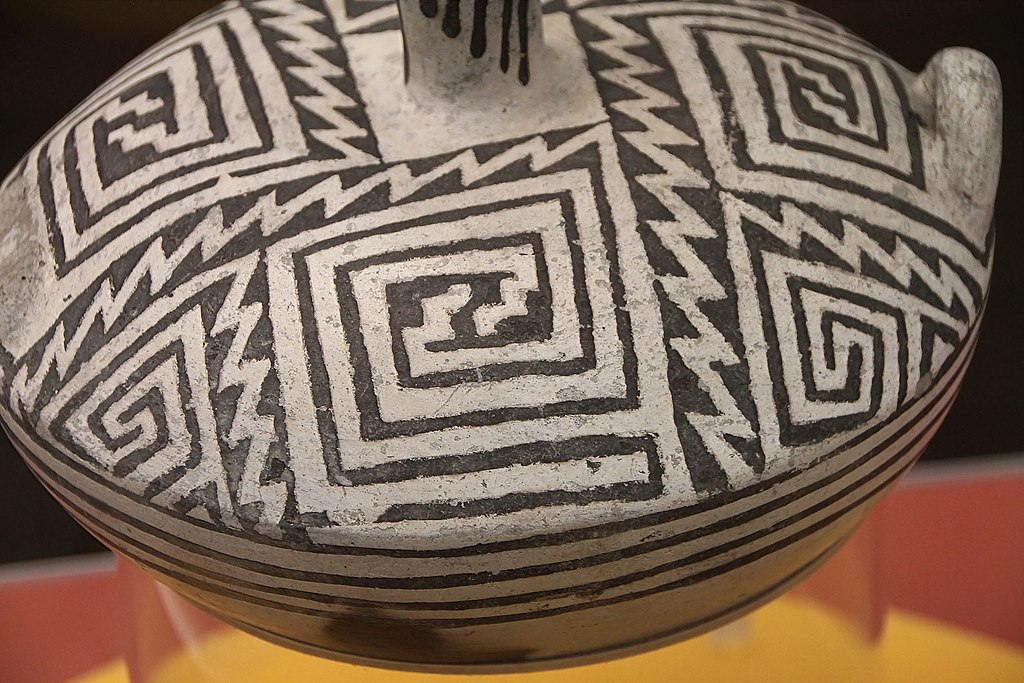
- Details
- By Jenna Kunze
Since last June, there have been more than 70 auctions—both international and domestic—selling potentially sensitive Native American cultural items. The Association on American Indian Affairs is educating buyers to avoid the corrupt and potentially poor investments into what is likely stolen Indigenous art and cultural belongings.
The oldest nonprofit serving Indian Country warned potential collectors this week about an upcoming auction of nearly 400 Indigenous cultural items, at least one of which it believes to be fake, and all of which were likely stolen from Native lands.
The Association on American Indian Affairs (AAIA) flagged at least 40 items that will be offered in the “American Indian & Tribal Art” auction as “potentially sensitive items” in an alert sent on March 14 to tribal nations, bands, or community members.
The online auction, conducted March 20-30 by privately held international auction house Bonhams Skinner, will feature a wide range of North American artifacts such as Northwest Coast horn spoons and totems, California baskets, Navajo textiles and silver and turquoise jewelry, Hopi katsinas, and Southwest pottery and an extensive collection of Plains Indian beadwork, according to the auction firm’s website.
In the email alert sent earlier this week, the AAIA distinguishes between the sale of cultural items that tribes should rightfully control and are still considered community-held, versus those covered under the Native American Graves and Protection Act (NAGPRA) or other laws.
“We use the term ‘potentially sensitive items’ because there are items that may not be defined under NAGPRA or other laws but they are still sensitive to your Nation and should not be sold,” the email reads. “YOUR NATIVE NATION, Band or Community is the only authority that can define what items should not be available for commercial sale.”
The association’s definition of “potentially sensitive cultural items” includes ancestral remains, burial objects, and sacred and cultural patrimony, according to Association on American Indian Affairs chief executive and attorney Shannon O’Loughlin (Choctaw). For the upcoming auction, some of those artifacts include: A Navajo dew claw rattle, A Cherokee polychrome carved wood mask, a Northwest Coast horn spoon, and A Great Lakes beaded bandolier bag. The collection is affiliated with at least 53 tribal nations or regions, according to information listed in the catalog.
Native News Online reached out to Bonham Skinner on Friday via phone and email for comment, but did not hear back from them.
“You can never pass good title from stolen property.”
The upcoming Bonhams Skinner sale is not the only one on the AAIA’s radar, nor is it an outlier in the rapidly growing world of online auctions that feature Indigenous artwork and artifacts. The AAIA has been tracking auctions selling Native American, Alaska Native, and Native Hawaiian cultural objects since 2018, both domestically and internationally. This year alone, the organization reports it has investigated 43 domestic and foreign auctions that are selling or have sold at least 1,672 objects that were likely stolen burial objects, or objects of cultural patrimony.
Congress defines Native patrimony as “An object having ongoing historical, traditional, or cultural importance central to the Native American group or culture itself, rather than property owned by an individual Native American, and which, therefore, cannot be alienated, appropriated, or conveyed by any individual regardless of whether or not the individual is a member of the Indian Tribe or Native Hawaiian Organization and such object shall have been considered inalienable by such Native American group at the time the object was separated from such group.”
 Shannon O’Loughlin, AAIA CEO and attorney (Photo: LinkedIn)
Shannon O’Loughlin, AAIA CEO and attorney (Photo: LinkedIn)
Although auction houses have the responsibility to the consignor of each item legally came into ownership, O’Loughlin told Native News Online that such a document is impossible to come by when it comes to certain Indigenous belongings.
“What we’ve seen in how these types of items move around is, usually: at some point, someone sells the item to someone else, or they have some kind of letter that says that Colonel so-and-so gifted it to them. [The auction houses] use that as proof of proper ownership.”
Historically, Native Nations did not willingly give their sacred and cultural items away. Collectors, amateur archeologists, and researchers have been digging Native American human remains and their burial objects out of graves from first contact up until present day.
Last October, a small museum in Barre, Massachusetts, finally agreed to return 151 sacred Lakota artifacts taken off the dead at Wounded Knee back to their rightful owners after more than a century in a museum.
The sacred items— including ceremonial pipes, moccasins, clothing, and the dried umbilical cords traditionally kept by tribal citizens throughout their lives — were taken off the dead by a worker in charge of clearing the field, then sold to a Massachusetts resident named Frank Root, according to the museum’s records. Root donated the artifacts to the museum in 1892, where they’ve remained ever since.
“The thing about theft is: you can never pass good title from stolen property,” O’Loughlin said. “This is why it is so important to alert buyers that, unless the auction house is consulting with Native Nations about the items they wish to put up for auction, the sensitive item was likely removed from its Nation improperly.”
In some cases, such as when an auction house is selling Native American human remains, the FBI Art Crimes Unit gets involved. With allegations of fraudulent or counterfeit art, the team at the Department of Interior’s Indian Arts and Crafts Board gets involved. If a person suspects a seller is misrepresenting their product as authentically Native-made, they can report potential violations to the IACB.
The IACB works to carry out the Indian Arts and Crafts Act, passed by Congress in 1990 in response to a growing sales of counterfeit Indian products in the billion-dollar Indian art market. The act, which Congressional members are pushing to update, provides criminal and civil penalties for marketing products as “Indian made” when such products are not made by Indians.
Meridith Stanton (Delaware Nation of Oklahoma), the director of the Indian Arts and Crafts Board, told Native News Online that the Act applies to venues across the board.
“It could be something someone sees at a powwow, at an art market, in a store, online, or in an auction catalog,” she said. Basically, If someone is marketing an artifact as Indian, but the informant is letting us know that they don’t believe it is made by an Indian, an Alaskan Native, or a particular Indian tribe, we take all the information and we do our due diligence.”
A unnamed supporter (left) holds a flag of the American Indian Movement and a member of the Arizona's Hopi tribe, Bo Lomahquahu (right) stand outside of the Druout's auction house to protest the auction of Native American Hopi tribe headdress in Paris, Friday, April 12, 2013. (AP Photo/Michel Euler)
“Their financial investment will go to zero.”
But in most cases, it's up to the affected nations to keep watchful eyes, and to bear the burden of proof. And that’s a huge burden, O’Loughlin said. “When your Nation has had thousands of items and Ancestors taken, it can be extremely difficult and time-consuming to prove how the item left Nation hands,” she said.
Which is why the AAIA is shifting its focus to educate buyers.
O’Loughlin said an announcement sent earlier this week is meant to educate potential buyers “that the purchase of these types of items is not a good financial investment because as laws continue to change to support repatriation, their financial investment will go to zero.”
Some buyers have no idea what they're getting into when they purchase Native art or artifacts. That was the position New York art collector and former dealer Monroe Warshaw found himself in 10 years ago at an art auction in Paris, when he purchased two sacred Hopi headdresses for about $36,500 from a collection of 72.
He was one of many buyers, who immediately learned of his misstep when he was barraged by reporters after the auction. The Hopi had mounted a campaign to protest the sale of sacred headdresses—items they believe contain the spirit of their ancestors—that were stolen from their nation.
About two months later, back in America, Warshaw visited the Hopi in Arizona to give the headdresses back to their original owners. After witnessing a Hopi dance with the headdresses, Warshaw said he understood that the items were living beings that one could not own.
“It's better than me having it as decoration above my sofa,” Warshaw said.
In general, the attitude of collectors of Indian art can range from paternalistic to racist, experts say. Warshaw doesn’t use those words, but acknowledges that dealers and collectors bring their own opinions and justifications to the art deals.
“They say: ‘If you repatriate, someone else [will] come and steal it, so that they can go out to buy alcohol. That's how these things left the reservation in the 20s, and 30s, the 40s, the 60s or 70s, the 80s, because they needed money to buy alcohol, because they have no money. Because there are no jobs and no future there in Hopi.’ That's the answer that you’ll get from someone who deals or dealt with these things.”
Since 2013, Warshaw has kept in touch with the Association on American Indian Affairs to alert them if he hears of any suspicious auctions of potentially sacred Native American artifacts.
The bottom line, according to AAIA’s O’Loughlin, is this: The auction house is a business trying to make money, and doesn't really care. [They value] commercial interest over human rights. I think it’s as simple as that.”
For more information about how to report a potential violation, or for tips on how to buy genuine Native art, visit the Indian Arts and Crafts Board website. If you have questions about Native American items in your possession, contact the Association on American Indian Affairs.
More Stories Like This
50 Years of Self-Determination: How a Landmark Act Empowered Tribal Sovereignty and Transformed Federal-Tribal RelationsCherokee Nation Launches Digital Dictionary to Support Language Revitalization
Prairie Band Potawatomi Nation Chairman Addresses Homeland Security Contract
Lancaster County to Recognize Conestoga-Susquehannock Tribe on Massacre Anniversary
How the Gaming Economy Helps Tribes Navigate Shifting Policies
Help us defend tribal sovereignty.
At Native News Online, our mission is rooted in telling the stories that strengthen sovereignty and uplift Indigenous voices — not just at year’s end, but every single day.
Because of your generosity last year, we were able to keep our reporters on the ground in tribal communities, at national gatherings and in the halls of Congress — covering the issues that matter most to Indian Country: sovereignty, culture, education, health and economic opportunity.
That support sustained us through a tough year in 2025. Now, as we look to the year ahead, we need your help right now to ensure warrior journalism remains strong — reporting that defends tribal sovereignty, amplifies Native truth, and holds power accountable.
 The stakes couldn't be higher. Your support keeps Native voices heard, Native stories told and Native sovereignty defended.
The stakes couldn't be higher. Your support keeps Native voices heard, Native stories told and Native sovereignty defended.
Stand with Warrior Journalism today.
Levi Rickert (Potawatomi), Editor & Publisher


